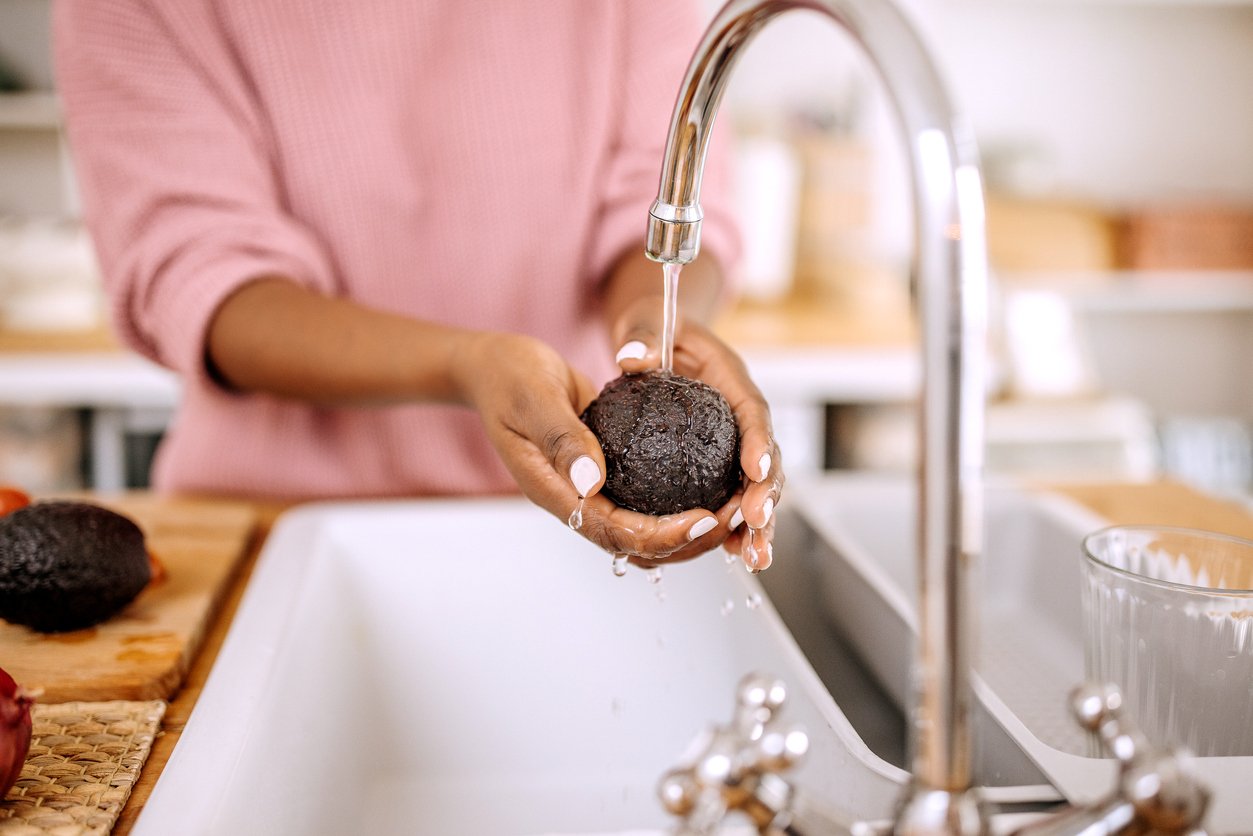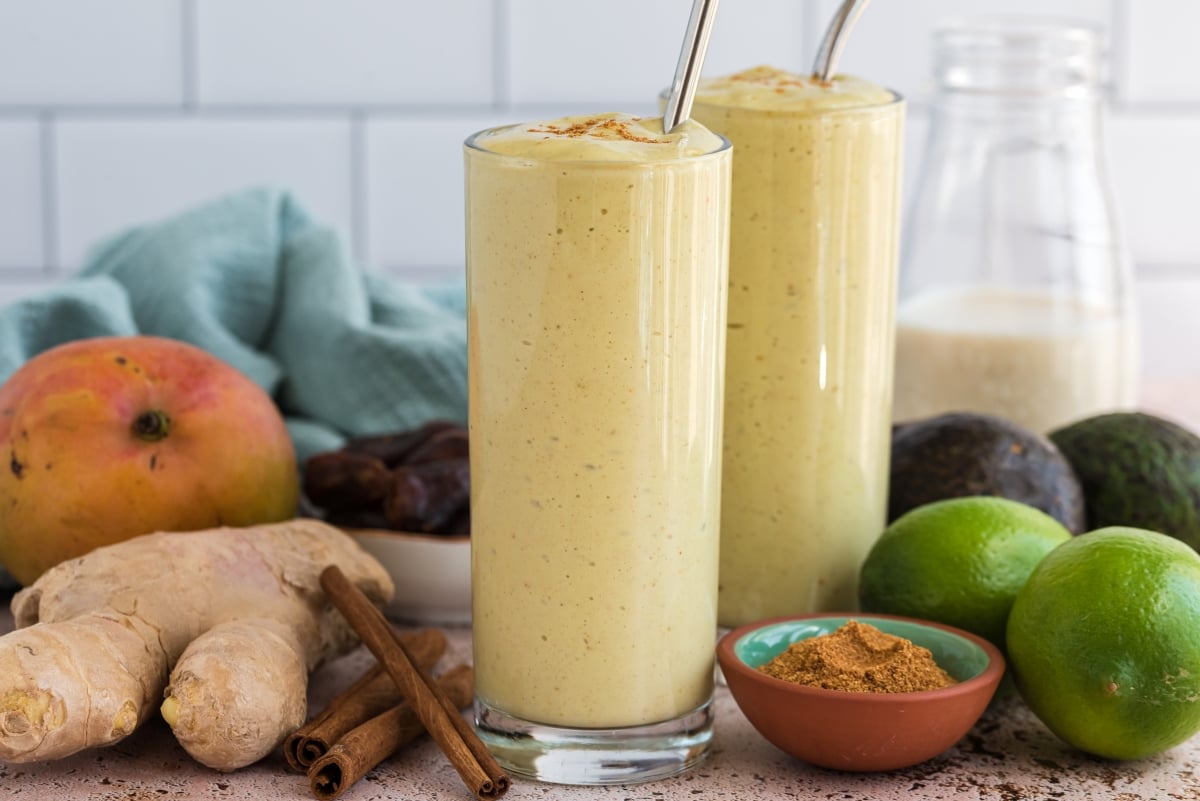The grocery store displays 150 avocados, all so hard that you’d have trouble cutting them in half with a reciprocating saw. You grab one, figuring it will be days before you can enjoy that avocado toast or guacamole. And then you wait. And wait. And wait.
And then, at 3:17 am one momentous day, your avocado decides it’s perfectly ripe. It remains ripe at 3:18 and all the way through 3:24. But by 3:36, its flesh is starting to develop mushy brown spots.
And at 6:28 am, when you stumble into the kitchen looking for coffee, that avocado is so overripe there’s nothing left to save. You weep while tossing its sad remains into the compost, vowing never to have your heart broken by an avocado again. But by your next trip to the supermarket, you’re at it again, holding on to the hope of fresh and perfectly ripe avocado.
I’m exaggerating, of course (mostly). But determining the ripeness of an avocado and knowing how to cut, store, and eat it can be tricky.
So if you want to know when your avocado has achieved peak ripeness, or how to store avocados so they ripen on your timetable, you’ve come to the right place.
In this article, you’ll also discover whether you should wash avocados before cutting, plus the best ways to cut an avocado, whether you want cubes, slices, or wedges.
You’ll also come away with some creative ways to incorporate avocados into your meals, including seven delicious recipes to put your avocado knowledge to use!
How to Tell When an Avocado Is Ripe

This is a key skill because finding an avocado that’s perfectly ready is rare. In fact, ripe avocados can easily get bruised in a supermarket display, so it’s generally preferable to buy them well in advance of when you need them.
When you have a perfectly ripe avocado, it’s slightly soft when squeezed gently but not mushy.
With some varieties, skin color is another indicator. Ripe Hass avocados can range from dark green to black. But be aware that some other avocado varieties are less expressive and fail to change color when ripe. For these, you need avocado ESP, the squeeze test, or the stem test.
The stem test is a way to peek inside an avocado without cutting it and exposing its flesh to the elements.
Here’s how to do it: Remove the little piece of stem on top of the fruit. If it resists being pulled off, it’s telling you that the avocado isn’t ripe yet. If the stem lifts off easily and reveals brown or discolored flesh inside, you’ve probably waited too long. But if the stem detaches well and the flesh is the right color for its variety — usually somewhere between yellow and green — then you probably have one of the greatest things in the universe: a perfectly ripe avocado.
How to Ripen an Avocado
You can adjust an avocado’s ripening speed by leaving the fruit on a kitchen counter at room temperature.
To accelerate the process, you can also place an avocado in a paper bag so the ethylene gas it releases can concentrate and work its magic. If you’re really in a hurry — the guests are arriving that evening, and your avocados can still be used for hammering nails into concrete — try adding a couple of other ripe ethylene-producing fruits, like banana, pear, or tomato.
Conversely, you can slow avocado aging by placing the fruit in the fridge. The FDA warns against storing them in water (despite what TikTok may want you to think) because of the risk of salmonella poisoning.
For more information on the different types of avocados and their various health benefits, check out our comprehensive avocado article here.
Do You Need to Wash Avocados?

Avocados are on the Environmental Working Group’s Clean Fifteen list, meaning most don’t carry a lot of pesticides. And even those fruits that do show negligible levels in their flesh, thanks largely to an avocado’s thick and inedible skin.
You may still want to wash your avocados before cutting, however. The CDC recommends this practice since cutting through unwashed skin may bring bacteria or other microorganisms into contact with the flesh.
But you don’t need to spend money on dedicated produce washes. The method that’s the safest and most effective at washing avocados, and other fruits and vegetables, is a simple baking soda and water solution.
How to Cut and Store an Avocado
The classic (and easiest) way to cut an avocado is to halve it lengthwise. One of those halves will hold the large pit, which you can remove by gently tapping with the sharp blade of a knife and then lifting it out of the fruit.
Once you have access to the flesh, you have a few options. You can use a spoon to scoop out the half intact for slices, wedges, chunks, or mashing. Or you can score it with a knife before scooping, and then use a spoon to liberate the chunks.
Check out this video to see this expertly demonstrated:
https://www.youtube.com/watch?v=hSe1qUO4uA4
Store unripe avocados at room temperature on the counter for two to four days. Once the fruit is ripe, either use it immediately or refrigerate it for up to five days. To prevent the flesh from turning brownish-gray once exposed to air, you’ll either need to eat the avocado immediately after cutting or sprinkle the exposed flesh with lemon juice or vinegar.
If you have cut avocado leftovers, store them in the fridge in an airtight glass or stainless steel container.
How to Eat an Avocado

Oh, let me count the ways! You can enjoy avocado in dips like guacamole, where the combination of avocado with an acidic liquid like lemon or lime juice can extend its freshness. Avocado flesh can also replace processed oils in dressings and sauces thanks to its high fat content.
While we’re on the subject of blending avocados, you can also use them in this way for avocado dessert recipes like popsicles, smoothies, and creamy pie fillings.
Sliced, avocado can add pizzazz to power bowls, salads, sandwiches, toast, wraps, sushi, tacos, and burritos. And once you’ve removed the flesh, you can mix it with veggies, whole grains, beans, and dips and stuff the hard skin with the mixture.
You’ll probably want a sharp chef’s knife to cut your avocados safely. And beyond that, all you really need is a fork for mashing into guacamole.
But if you prefer dedicated kitchen gadgets, you can find avocado slicers that make quick work of cutting the fruit into beautiful slices of uniform thickness, as well as avocado smashers that provide more surface area and leverage for mashing than a plain old fork.
Avocado Recipes to Try at Home!
Avocado is both a culinary and nutritional superstar. With so many ways to enjoy this delicious and versatile fruit, we hope you have as much fun in the kitchen preparing these recipes as we did creating them!
1. Everything Bagel Avocado Toast

Creamy avocado mash makes the ideal silky and nutritious base for this Everything Bagel Avocado Toast. Generously topped with Vegan Cream Cheese, crunchy veggies, and savory Everything Bagel Seasoning, this delightful toast is sure to move to the top of your list for simple and tasty avocado recipes!
2. Mango Lassi Avocado Smoothie

Nutrient-rich Mango Avocado Lassi harnesses the power of plants to create a cool, creamy, and nutritious smoothie that is satisfying to sip on a sunny day. Both mango and avocado give this lassi the perfect creaminess that rivals its dairy-based counterpart. What’s more, the silky avocado adds healthy plant-based fat, fiber, and micronutrients that make this naturally sweet and tasty smoothie a healthy choice you can feel proud to enjoy!
3. Chilled Cucumber Avocado Soup

It doesn’t take much effort to transform seemingly simple ingredients into a work of art. Cucumbers and avocados blend harmoniously together to create a creamy, light, and refreshing soup that is teeming with phytonutrients galore. Thanks to the smooth and buttery avocado, this soup finishes with a satisfying mouthfeel that is simply divine!
One fun way to enjoy this chilled avocado soup is as an appetizer in shot glasses for your dinner guests. Garnish each with a little paprika and parsley to elevate them to fancy restaurant status!
4. Creamy Apple Avocado Dressing

Avocado and apple may seem like an unlikely duo, but they actually meld together beautifully in this dressing. Naturally sweet apples give just the right amount of sweetness, while avocados deliver a silky smooth creaminess that takes this dressing to the next level. Dress a big colorful salad or a warm and hearty grain bowl with this tasty and refreshing dressing.
5. Avocado Salad

Something as simple as an avocado salad can add so much nutritional value to your plate. Avocados are probably best known for their heart-healthy monounsaturated fats. But that’s not their only favorable health trait! They’re also rich in fiber and carotenoids, two other nutrients that play big roles in protecting your heart and overall health. Enjoy this salad on its own or on top of tacos or grain bowls.
6. FRN’s Homemade Guacamole

This wouldn’t be an avocado recipe roundup without an appearance from the famed avocado dip so many have come to know and love — guacamole! FRN’s Homemade Guacamole is a five-ingredient recipe that’s ready in just ten minutes and is the perfect way to enjoy scrumptious, nutritious, and creamy avocados. Serve as an appetizer, topping, or stuffing for sweet potatoes.
7. Avocado Key Lime Pie

Thanks to avocado’s more subtle flavors and silky texture, it’s perfect for making homemade plant-based desserts like this Avocado Key Lime Pie. As you may know, there’s a lot of fiber hidden in avocados, as well as numerous nutrients like folate, magnesium, potassium, vitamin C, and B vitamins — just to name a few! Combined with a nutty pecan pie crust and naturally sweet dates, this is one nutrient-dense and whole food way to sweeten the end of a meal.
Avocados Guac Our World!
Trying to pick out and eat an avocado at home can be challenging. Determining if an avocado is ripe involves testing its firmness, observing its skin color, or using the stem test. There are also a variety of cutting techniques you can use to prepare them, including halving, scooping, scoring, and using specialized tools.
But once you get the hang of choosing and preparing an avocado, the sky is the limit! Try one of these avocado recipes at home to get familiar with this buttery green fruit.
Tell us in the comments:
-
What are your best tricks for getting those “just-right” ripe avocados?
-
What’s your favorite culinary use of avocado?
-
Have you ever used avocado in a dessert? If so, what did you make?
Featured Image: iStock.com/KucherAV




